The NANOS Historical Collection: Assortment of documents relating to the history of the North American Neuro-Ophthalmology Society (NANOS).
NOVEL: https://novel.utah.edu/
TO
| Title | Description | Creator | Date | ||
|---|---|---|---|---|---|
| 1 |
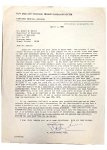 | Letter from Derek E. Denny-Brown to Robert B. Daroff, April 1, 1969 | A letter discussing "tonic reflex deviation" from Dr. Derek E. Denny-Brown to Dr. Robert B. Daroff. April 1, 1969. | Derek E. Denny-Brown, DPHIL | 1969-04-01 |
| 2 |
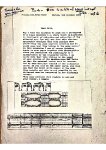 | Letter from Alfred Huber to William F. Hoyt, October 3, 1969 | A letter sent from Zurich, Switzerland, by Dr. Alfred Huber to Dr. William F. Hoyt. The letter contains an "electromyographic specimen" and "photograph of a Duane Syndrome III, where there is imitation or impairment of abduction and adduction of the affected eye." October 3, 1969. | Prof. Dr. med. Alfred Huber | 1969-10-03 |
| 3 |
 | Eye Movement Talk Conclusion | Conclusion of Robert Daroff's Eye Movement Talk at the 7th Bascom Palmer Symposium in 1970. | Robert B. Daroff, MD | 1970 |
| 4 |
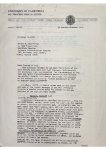 | Letter from Robert B. Daroff and B. Todd Troost, November 14, 1970 | A letter from Dr. Robert B. Daroff and Dr. B. Todd Troost to "Friends of N-O" discussing the etymology of the word "saccade." November 14, 1970. | Robert B. Daroff, MD | 1970-11-14 |
| 5 |
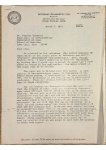 | Letter from Robert B. Daroff to Stanley Thompson, March 1, 1971 | Letter from Dr. Robert B. Daroff to Dr. Stanley Thompson critiquing Rothstein and Alvord's paper, "Posterior Internuclear Ophthalmoplegia." March 1, 1971. | Robert B. Daroff, MD | 1971-03-01 |
| 6 |
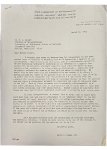 | Letters from David G. Cogan to E. C. Alvord and Robert B. Daroff, March 10, 1971 | Letters from Dr. David G. Cogan to Dr. E. C. Alvord and Dr. Robert B. Daroff. The former discusses Dr. Alvord's paper, "Posterior Internuclear Ophthalmoplegia." In the latter, Dr. Cogan introduces the possibility that Dr. Alvord, and co-author Dr. T. L. Rothstein, may have presented the "first patho... | David G. Cogan, MD | 1971-03-10 |
| 7 |
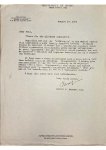 | Letter from Robert B. Daroff to William F. Hoyt, August 19, 1971 | A letter to Dr. William F. Hoyt from Dr. Robert B. Daroff discussing "glissadic corrective movements" vs. "glissadic saccade." April 19, 1971. | Robert B. Daroff, MD | 1971-08-19 |
| 8 |
 | Letter from J. Lawton Smith to Robert B. Daroff, March 28, 1972 | A letter to Dr. Robert B. Daroff from Dr. J. Lawton Smith illustrating differing opinions regarding a report of a "Lutz posterior internuclear palsy." The letter also contains photos of what Dr. Lawton Smith identified as "spasm of the near reflex." March 28, 1972. | J. Lawton Smith, MD | 1972-03-28 |
| 9 |
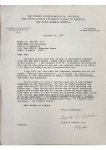 | Letter from Frank B. Walsh to Robert B. Daroff, October 24, 1975 | Letter from Dr. Frank B. Walsh to Dr. Robert B. Daroff containing slides belonging to Dr. Daroff on "spongiform degeneration" as well as a short movie belonging to Dr. Daroff showcasing "synketic movements." October 24, 1975. | Frank B. Walsh, MD | 1975-10-24 |
| 10 |
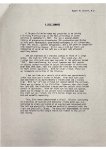 | Letter from Simmons Lessell to Robert B. Daroff, October 12, 1983 | Letter from Dr. Simmons Lessell to Dr. Robert B. Daroff. Dr. Lessell thanks Dr. Daroff for sharing a case of a 34-year-old woman with visual distortion, and proceeds to discuss the case. Also included is the original case summary (September 8, 1983). October 12, 1983. | Simmons Lessell, MD | 1983-10-12 |
| 11 |
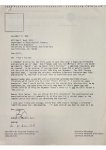 | Letters between Robert B. Daroff and William F. Hoyt, November 4 and 14, 1988 | Letters between Dr. Robert B. Daroff and Dr. William F. Hoyt regarding locating an article on "Pick's Visions" (Arnold Pick, 1851-1942), November 4 and 14, 1988. | Robert B. Daroff, MD | 1988-11-04; 1988-11-14 |
| 12 |
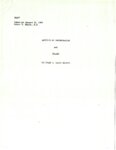 | Articles of Incorporation and Bylaws: The Frank B. Walsh Society | Robert S. Hepler, MD | 1989-01 | |
| 13 |
 | Merger of Walsh Society into NANOS | This document contains the legal transactions, or "articles of merger", undertaken in 1992, and signed on September 1, 1992, to merge the formerly distinct Frank B. Walsh Society and North American Neuro-ophthalmology Society. | Robert B. Daroff, MD; Thomas J. Carlow, MD; David L. Knox, MD; William F. Hoyt, MD | 1992 |
| 14 |
 | Pictorial Neuro-ophthalmology | Historic diagram describing ocular tilt reaction and a variety of other disorders. Acknowledgement: Many thanks to Prof Dr. William F. Hoyt for helpful comments on the manuscript. | Tadashi Fujino, MD | 1995-12-07 |
| 15 |
 | William Hoyt, MD: Teacher of Teachers | In a 60-year career in neuro-ophthalmology, William Hoyt, MD trained 71 fellows and co-authored (with Frank Walsh, MD) the canonical textbook Clinical Neuro-Ophthalmology. He added pathophysiologic rigor to a discipline that was rich in anecdote but short on science. His deeply analytic approach to ... | Jonathan D. Trobe, MD | 2010 |
| 16 |
 | Lawton Smith, MD: Evangelist of Neuro-Ophthalmology | For the second half of the 20th century, the best known ophthalmologist in the world was Lawton Smith, MD. Everyone was mimicking the gestures and argot of the "simple country doctor" with the South Carolina twang. Mixing medicine with evangelism, he converted scores of medical students to ophthalmo... | Jonathan D. Trobe, MD | 2010 |
| 17 |
 | Norman Schatz, MD: Comedic Genius | No one in the field of neuro-ophthalmology could be as smart-and-funny as Norman Schatz, MD. Drawing on the enormous and diverse patient population of the Wills Eye Institute, Jefferson Medical College, he developed an unmatchable repertoire. If you had seen an intriguing case, he had seen three of ... | Jonathan D. Trobe, MD | 2010 |
| 18 |
 | Irene Loewenfeld, PhD: Physiologist of the Pupil | Irene Loewenfeld, PhD was trained in physiology at New York University and Columbia University under the direction of Otto Lowenstein, MD, PhD. With her mentor, she produced a prodigious amount of research on pupil function, culminating in 1993 in the publication of a 2223-page textbook on the pupil... | Jonathan D. Trobe, MD | 2010 |
| 19 |
 | Dartmouth Eye Institute | From 1921 to 1947, the center of research into visual perception in the United States was in the rural hamlet of Hanover, New Hampshire. Situated on the campus of Dartmouth College, The Dartmouth Eye Institute (DEI) fostered an uncommon collaboration of physiologists, psychophysicists, ophthalmologi... | Jonathan D. Trobe, MD | 2010 |
| 20 |
 | Otto Lowenstein, MD, PhD: Founder of Pupillography | Otto Lowenstein, MD, PhD was a pioneer in the quantitative measurement of pupil function. Trained in mathematics, physics, and medicine, he abandoned a promising career in Germany to avoid Nazi persecution, emigrating to the United States in 1939. At Columbia University, he developed pupillographic ... | Jonathan D. Trobe, MD | 2010 |
| 21 |
 | Thomas Hedges, Jr, MD: Progenitor of Neuro-Ophthalmology Societies | Thomas Hedges, Jr, MD, the first person to take a full neuro-ophthalmology fellowship (under Frank Walsh, MD at the Wilmer Eye Institute, Johns Hopkins University), used his energy and organizing skills to set in motion the Walsh Society and the International Neuro-Ophthalmology Society. He mentored... | Jonathan D. Trobe, MD | 2010 |
| 22 |
 | Charles Miller Fisher, MD: Master of Clinicopathologic Correlation | Trained in neurology and pathology, Charles Miller Fisher, MD applied painstaking clinical and tissue examination to set the foundation for our current understanding of cerebrovascular disease and many other neurologic conditions. His special passion was neuro-ophthalmology. | Jonathan D. Trobe, MD | 2010 |
| 23 |
 | Neuro-Ophthalmology at the Mayo Clinic | The Mayo Clinic in Rochester, Minnesota contributed gloriously to the early history of neuro-ophthalmology in North America. Between 1917 and 1991, Mayo Clinic physicians recognized the importance of close collaboration with neurology, neurosurgery, and internal medicine and put their stamps--if not... | Jonathan D. Trobe, MD | 2010 |
| 24 |
 | Noble David, MD: Bard of Neuro-Ophthalmology | Noble David, MD could as easily recite the sonnets of Petrarch as the science of neuro-ophthalmology. One of the progenitors of retinal fluorescein angiography, he produced groundbreaking experimental and clinical studies on the retinal circulation. | Jonathan D. Trobe, MD | 2010 |
| 25 |
 | Pioneers of Neuro-Ophthalmology-Intro Poster | Neuro-ophthalmology in North America has a colorful history. This exhibit displays that history through some of the people who made it happen. Adapted from interviews and essays that appeared in the Journal of Neuro-Ophthalmology from 2001 to 2009, these posters show how a small number of dynamic an... | Jonathan D. Trobe, MD | 2010 |
